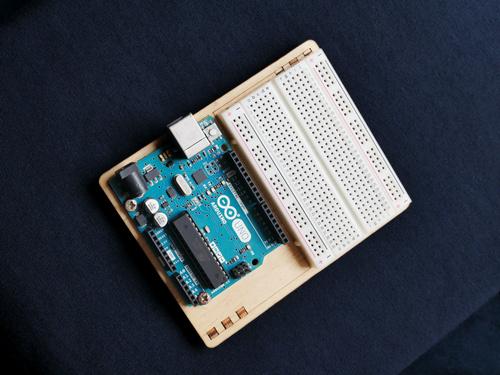Multilayer Printed Circuit Boards (PCBs) have become essential components in modern electronic devices, offering enhanced functionality and compact designs. Creating a multilayer PCB involves a meticulous process that demands precision and expertise. In this article, we will guide you through the steps of making a multilayer PCB.
1. Design the PCB:
Create a detailed schematic of your circuit using PCB design software. Define the number of layers, trace widths, and component placements. This step is crucial as it forms the foundation of your multilayer PCB.
2. Choose the PCB Material:
Select a suitable substrate material such as FR-4, a widely used flame-retardant epoxy fiberglass material. Consider the dielectric constant, thermal properties, and cost when choosing the material for your specific application.
3. Layer Stackup Design:
Design the layer stack-up based on your requirements. Decide the number of layers and their arrangement. Common multilayer PCBs can have 4, 6, 8, or more layers, each serving a specific purpose in the circuit.

4. Create Inner Layers:
Laminate multiple layers of substrate material impregnated with adhesive, creating a solid panel. Using a CNC machine, drill holes for vias, connecting the inner layers. These vias establish electrical connections between different layers of the PCB.
5. Apply Copper Foil:
Thin copper foil to both sides of the inner layers, covering the drilled holes and forming conductive pathways. An etching process removes excess copper, leaving behind the desired circuit traces.
6. Add Insulating Layers:
Apply insulating material between copper layers to prevent short circuits and enhance signal integrity. This insulating material is typically a layer of prepreg, a fiberglass material coated with resin.
7. Press and Cure the PCB:
Place the prepared layers in a hydraulic press, applying heat and pressure to bond the layers together permanently. This process, known as lamination, ensures that the PCB remains sturdy and durable.
8. Drill and Plate Outer Layers:
Drill holes for vias and component lead through the laminated stack. Plate these holes with a conductive material, typically copper, to establish connections between the layers and components.
9. Apply Solder Mask and Silkscreen:
Apply a solder mask, a protective layer that covers the copper traces, leaving only the solder pads exposed. Add a silkscreen layer for labeling components and indicating polarity.
10. Final Inspection and Testing:
Thoroughly inspect the multilayer PCB for any defects, such as short circuits or missing connections. Use advanced testing methods like flying probe testing or in-circuit testing to ensure the PCB functions as intended.
Creating a multilayer PCB is a complex yet rewarding process. Attention to detail, precision, and adherence to industry standards are essential to producing high-quality multilayer PCBs. As technology advances, so do the techniques and materials used in PCB manufacturing, enabling the development of more sophisticated and compact electronic devices.

